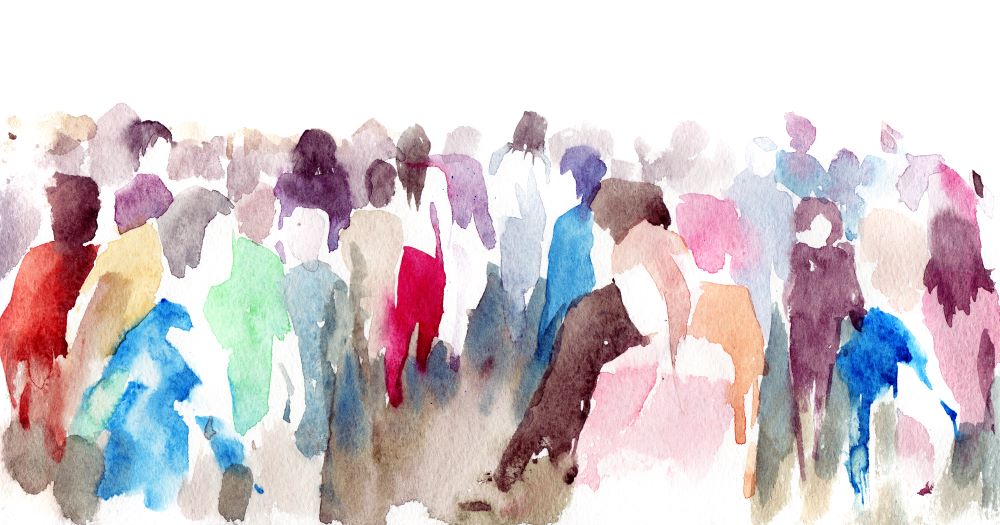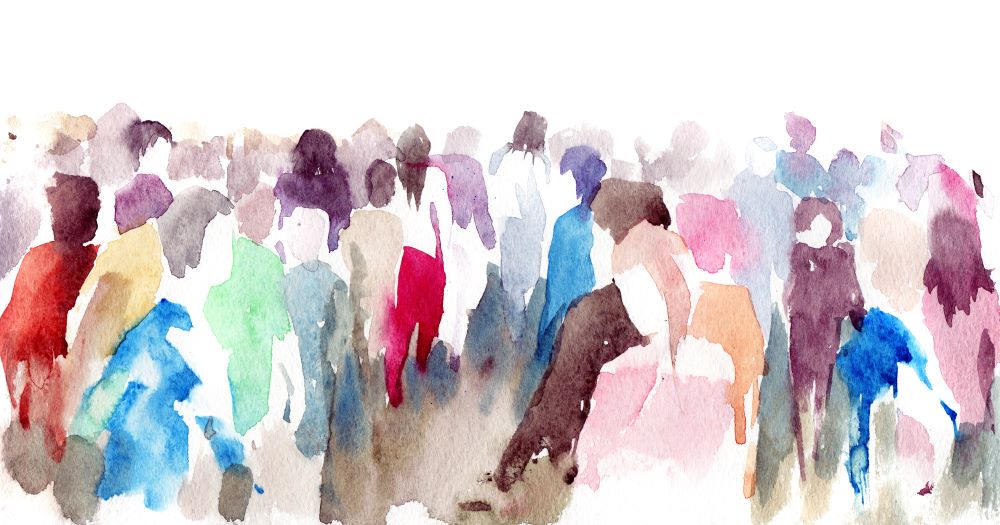The role of the consumer in the circular economy of textiles

In circular economy, the aim is to replace the prevalent “take, use, throw away” consumption model with more sustainable consumption practices. Promoting circular economy requires action from the public sector, companies, as well as from consumers. The role of the consumer in circular economy has not been in the focus of research, and it has often been reduced to adopting ready-made circular economy solutions. However, the transition to circular economy requires fundamental changes not only in production but also in the consumption practices. The role of the consumer in circular economy can be examined for example through the following questions: how can consumers be persuaded to use circular economy services? What does the transition to a circular production and consumption model require from the consumer?
What do we consume?
We all consume textiles, and their production involves significant problems. Our consumption choices sustain demand and make it profitable to continue the unsustainable textile production. In 2019, Finnish households consumed an average of 9.4 kilograms of new textiles per person, and 67% of new textiles were imported. In the same year, a total of more than 85 million kilograms of textile waste was collected, of which approximately 60% was incinerated. (Dahlbo et al. 2021, 5.)
The global production and consumption of clothing is predicted to triple from current levels by 2050. At the same time as the clothing consumption increases, clothes are being used for a shorter period, which leads to growing environmental harm in the future. (Van der Ven 2022, 23.) According to various estimates, the global emissions of fashion is approx. 4–10%, and the share is predicted to rise to up to a quarter of emissions by 2050. (Coscieme et al. 2022, 16.)
Circular economy as part of consumption practices
In the consumer decision process, according to the Engel-Blackwell-Miniard model (see e.g. Bray 2008), seven different stages can be distinguished. The stages are need recognition, search, pre-purchase evaluation of alternatives, purchase, consumption, post-consumption evaluation, and divestment. The decision process is thus divided into stages before and after the purchase decision. Circular economy can play a part in the decision process, especially in the stages of search, consumption and divestment.
The consumer’s choice can be influenced by offering extensive information about the options provided by circular economy. The reliability of the information is essential, and applying the information to one’s own consumption practices often requires assistance. The textile industry, research institutes and organizations have conducted extensive research on the sustainability of textiles. Despite the amount of information and recommendations available, there have been no significant changes in consumption behaviour.
The problems related to fast fashion and ultra-fast fashion have also been highlighted in different media, and not many have avoided seeing pictures of landfills covered with textile waste. On the other hand, it can be difficult to find detailed information about the sustainability of a certain product. As part of the EU’s textile strategy, a digital product passport is being developed to tackle this problem (see e.g. Sitra 2023). In an ideal situation, the consumer would not have to speculate the sustainability of his or her choices, as the production processes would be based on sustainability and circular economy.

One of the main objectives in circular economy is to extend the product life cycle, which means better product quality, durability and repairability. More and more products and services based on circular economy are emerging. Numerous second-hand stores and various clothing rental and lending services provide an alternative to buying new products. For the consumer, this means a shift from owning products to using services. In recent years, recycling stores and services have been set up in department stores and shopping centres, and some companies also offer buyback services for their own brands. The central location of second-hand stores in city centres and along shopping routes increases their visibility and presumably also improves consumer attitudes towards used and recycled products. Consumers are increasingly interested in product repair and maintenance, both as a service and as a DIY activity.
The consumer’s satisfaction with the choice is weighed in the post-consumption evaluation of the product. The durability, repairability and longevity of the product are likely to increase the perceived satisfaction. It has a significant impact on consumption behaviour and consumption choices in the future, as well as the consumer’s commitment to circular economy. In circular economy, it is possible to extend consumption processes so that new needs are formed less often than before, This, in turn, reduces the need of making new products. In the stage of divestment, circular economy services provide options for selling the product for reuse, which is more resource-efficient than recycling.
In addition to shifting from owning to using more circular economy services, consumption should also be reduced. Circular consumption is not necessarily sustainable, and the consumption of recycled products should also be needs-based. Coscieme et al. (2022, 31–33) have concluded that reducing purchasing of new clothes is the most effective way to reduce textile industry’s climate emissions. The second biggest emission reductions can be obtained by increasing the use-time of clothes, while reducing washing and drying, responsible disposing and buying second-hand clothes had a significantly smaller impact on emissions. However, buying second-hand clothes also has indirect effects on emissions, since it reduces the consumption of new clothes and increases the number of times the clothes are used.
Challenges and opportunities
Many consumers are aware of the problems with textile consumption. However, if circular economy services are not available, it is difficult to change the consumption behaviour. Matschoss et al. (2023) have identified problems for example in the usability and reliability of the consumer services in circular economy. In addition, the current economic model, the lack of political incentives and the prevailing culture create challenges for promoting circular economy services. There are also significant regional differences in the availability of services. Thus, sustainable consumption choices require circular economy services that are easily accessible, competitively priced, and easy to use. Only a small minority of consumers are pioneers of sustainable consumption, which is why the services must be designed to meet the needs of the larger public.
It is impossible to give a precise definition of sustainable consumption, and the various environmental labels used in products may also confuse consumers. EU’s circular economy action plan aims to empower consumers by prohibiting companies’ greenwashing based on vague and misleading environmental claims (European Commission 2022). By increasing consumers’ influence and access to information, they are better positioned in the market and future purchase decisions can be based on more reliable information.
Various economic or policy instruments can be used to promote a change in consumption behaviour. The Institute for Economic Research (VATT) and the Finnish Environment Institute (Syke) have, for example, examined the introduction of a consumption tax based on products’ life cycle emissions (Remes et al. 2023). However, a change in consumption behaviour also requires a cultural change as well as a change in attitude towards used and recycled products. They may be seen as shabby, unfashionable and of poor quality, and therefore not as part of one’s own lifestyle. According to Korsunova and Råberg (2023, 51–52), increasing knowledge and understanding of circular economy related activities is essential in developing citizens’ competence in circular economy. It makes learning new skills easier and, above all, it enables a more favourable attitude towards product repair and maintenance.
To some consumers, the transition to circular economy may seem challenging, and that it would require giving up the accustomed lifestyle. However, the change towards more sustainable consumption does not have to be sudden and all-encompassing. For example, rental and lending services can be used in the most suitable product categories. Uusitalo and Närvänen (2021, 4) point out that the benefits of sustainable consumption are not necessarily immediately visible to the consumer. Sustainable consumption also has a cost, and it requires some effort. In addition, the benefits and disadvantages of sustainable consumption are unevenly distributed among consumers, which may affect the willingness to commit to the change.
By setting an example with one’s own consumption behaviour consumers can push the change forward and encourage others to move towards circular economy. For the expansion of circular economy, it is essential to include all consumer segments in the process. A just and fair transition entails broad participation and equal opportunities to benefit from the circular economy services. Building an extensive circular economy service network also requires social support for companies shifting to circular economy business models.
Minna Leppälä
The author is completing her MBA in the Circular business models research group, Turku UAS
References
Bray, J. P. 2008. Consumer Behaviour Theory: Approaches and Models. Discussion Paper.
